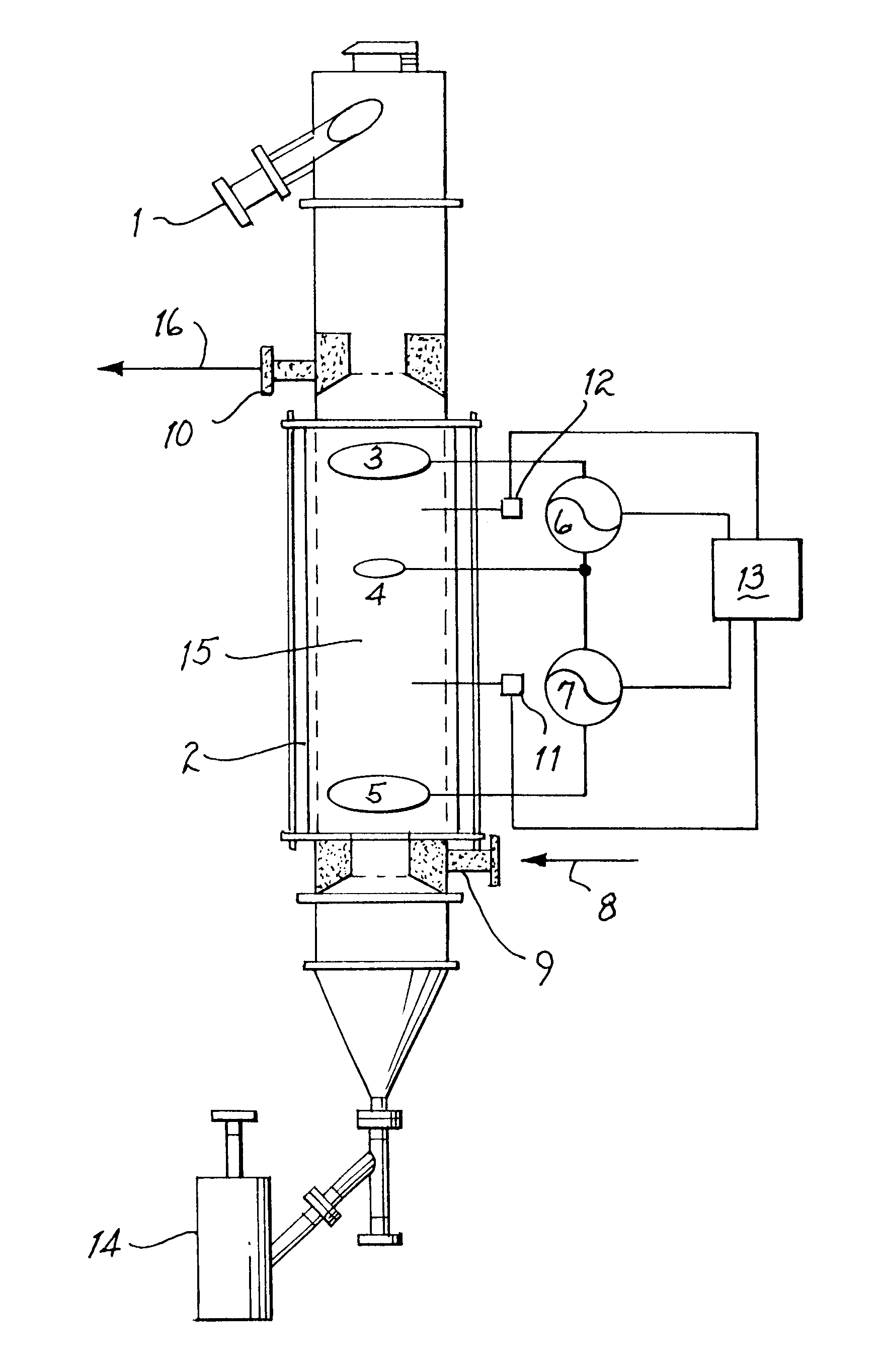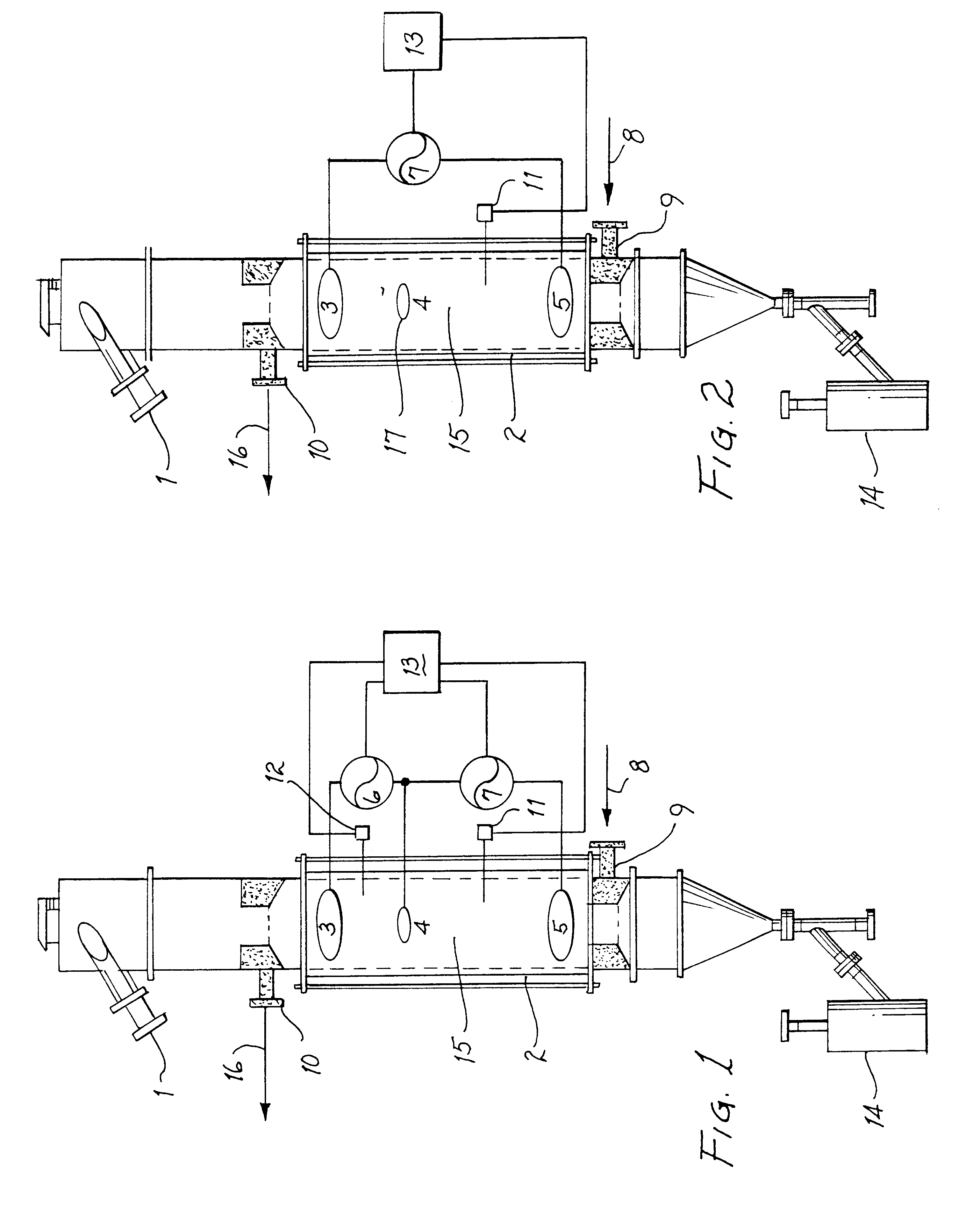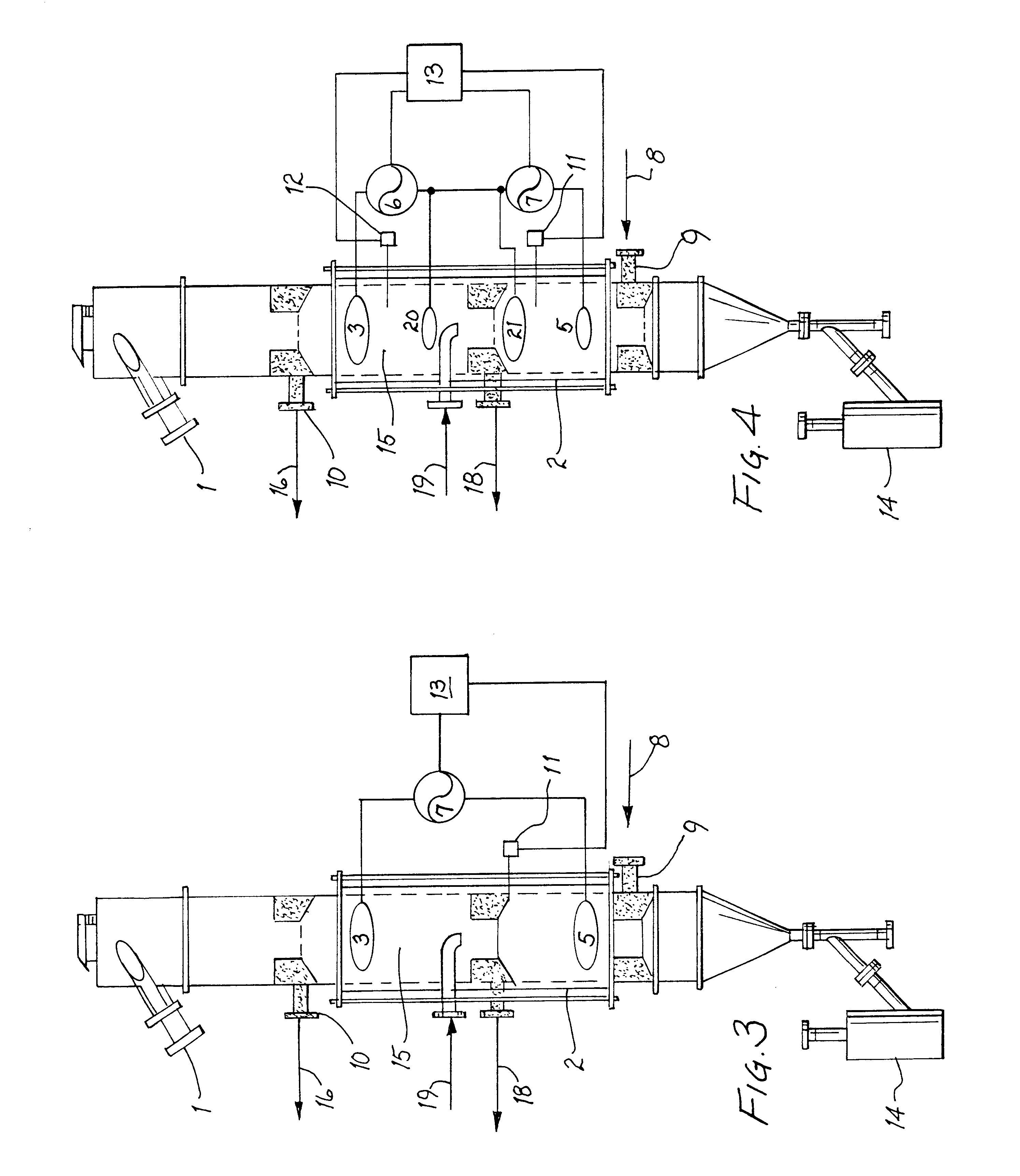Method and apparatus for controlled heating of adsorbent materials
a technology of adsorbent materials and controlled heating, which is applied in the direction of electric/magnetic/electromagnetic heating, dispersed particle separation, separation processes, etc., can solve the problems of high fuel consumption, high operating cost, and inability to achieve practical approaches, so as to minimize the problem of temperature control
- Summary
- Abstract
- Description
- Claims
- Application Information
AI Technical Summary
Benefits of technology
Problems solved by technology
Method used
Image
Examples
Embodiment Construction
Referring to FIG. 1, adsorbent material enters a regeneration / reactivation vessel at the inlet 1 thereof. The regeneration vessel may be a cylindrical vessel constructed of non-electrical conducting material such as a ceramic, or may be formed of any material having an electrical insulating lining. Sufficient adsorbent material is provided such that the column of material in the vessel is always full. The carbonaceous adsorbent is caused to flow downward through the column at a controlled rate, as dictated by the operation and settings of adsorbent removal device 14. While the present invention is described in terms of carbonaceous adsorbent, and while such adsorbent is the most common used for the removal of VOC's in gas streams, other adsorbent materials are appropriate provided they are capable of being heated by electrical current passing therethrough. The electrical current may be an AC or DC current. In due course, the adsorbent flows through electrically non-conductive column...
PUM
| Property | Measurement | Unit |
|---|---|---|
| boiling points | aaaaa | aaaaa |
| temperature | aaaaa | aaaaa |
| temperature | aaaaa | aaaaa |
Abstract
Description
Claims
Application Information
 Login to View More
Login to View More - R&D
- Intellectual Property
- Life Sciences
- Materials
- Tech Scout
- Unparalleled Data Quality
- Higher Quality Content
- 60% Fewer Hallucinations
Browse by: Latest US Patents, China's latest patents, Technical Efficacy Thesaurus, Application Domain, Technology Topic, Popular Technical Reports.
© 2025 PatSnap. All rights reserved.Legal|Privacy policy|Modern Slavery Act Transparency Statement|Sitemap|About US| Contact US: help@patsnap.com



